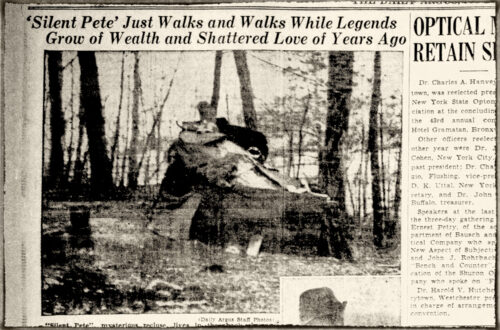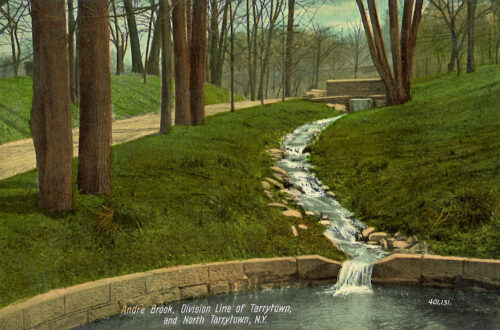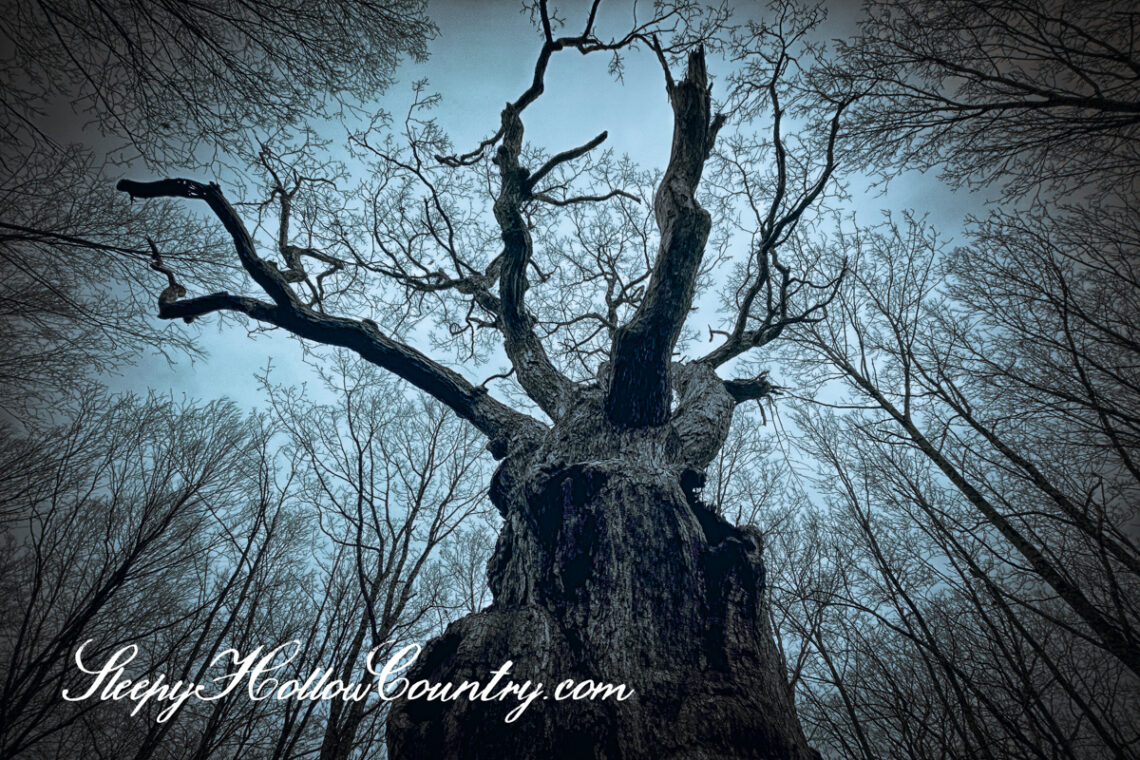
Tragedy at the Boutonville Oak
Let’s hike in the woods of the Ward Pound Ridge Reservation to the Boutonville Oak. We can thread along roads and trails, traverse hollows, and make our way along densely wooded hillsides. It is a nature preserve of nearly 4,400 acres and one of Sleepy Hollow Country’s largest parks. It has a deep and storied history and the many points of interest can lead from one legend to the next.
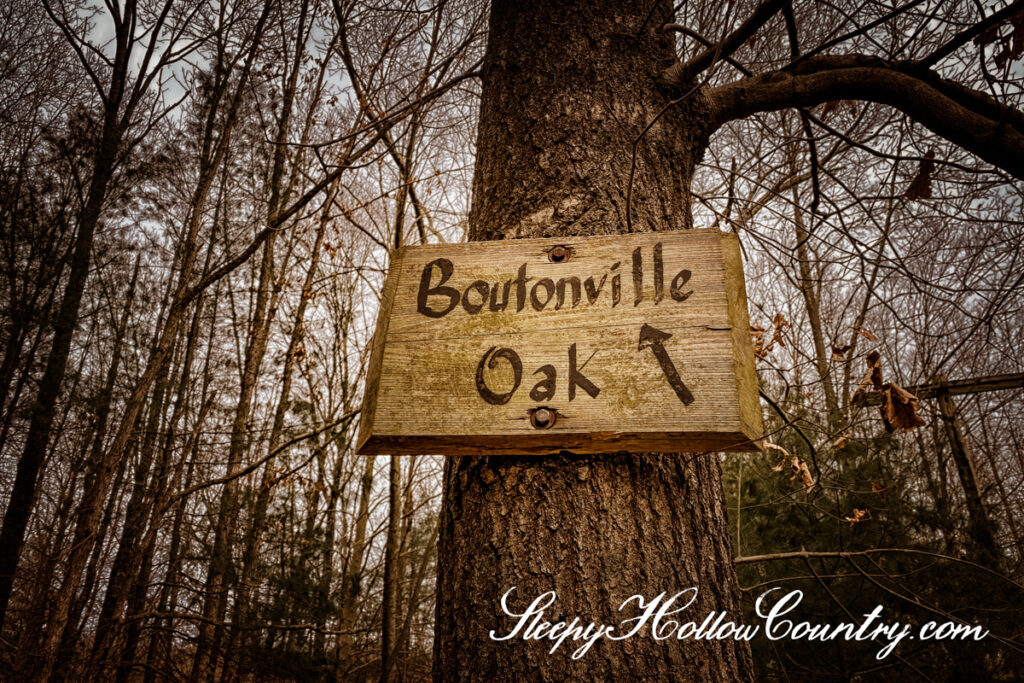
History of the Boutonville Oak
Embedded on the far eastern border though, towers an ancient and gnarled oak tree.
Known locally as the Boutonville Oak, for its proximity to the hamlet of Boutonville, this sentinel in the landscape took root on a ridge over the Cross and Waccabuc Rivers long before Europeans arrived in this region. It was an important and sacred place for the local indigenous tribes, was already a substantial specimen when the Dutch Patroons were in residence, and was a well-known waypoint during the American Revolution. It survives today as an imposing living landmark in a region littered with many geologic sites of folklore.
Today, the Boutonville Oak towers on its hill, and its crown of branches spread an impressive diameter of 73 feet, while its formidable trunk measures nearly 15 feet around. It’s a site of quiet reflection and wonderment, and also, to no one’s surprise, has a ghost of its own.
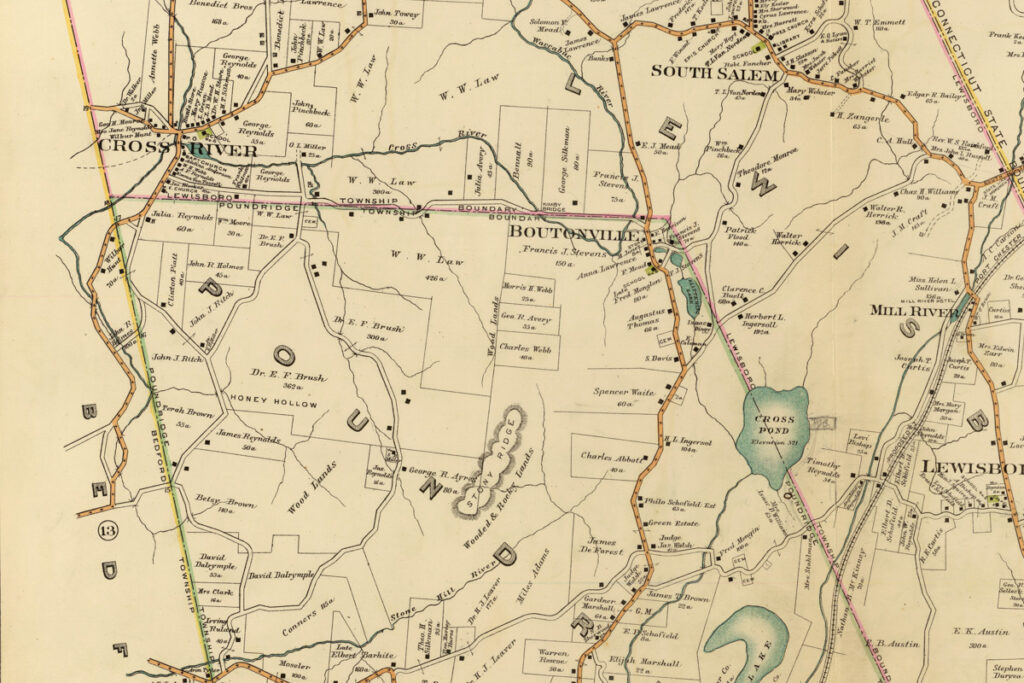
The Burnt House Story
A man whose name is lost to the annals of history, had no wife and lived with his four children in a ramshackle house west of Boutonville in the late 19th century. The children were young and familiar with the other families in the area; they attended the nearby schoolhouse.
The story varies in many of the details. In one version, the man was a known to frequent taverns and public houses, his alcoholic tendencies perhaps due to the loss of his wife, or maybe the cause of her absence. He would regularly drink away his nights. In another version, the events take place on a one-off instance of the man stepping out for an evening to imbibe.
Regardless, this father left home one cold winter night to take in the comforts of an ale house while his children slept alone at home, under quilts, to stay warm. The rest of this tragedy almost tells itself: a large ember from the fire alights and catches something in the shack. One version suggests the house itself was nothing but a drafty tinderbox, while in another, the quilt the children were sleeping under catches fire. The result is nevertheless devastating and tragic. An entire loss of the home and lives therein.
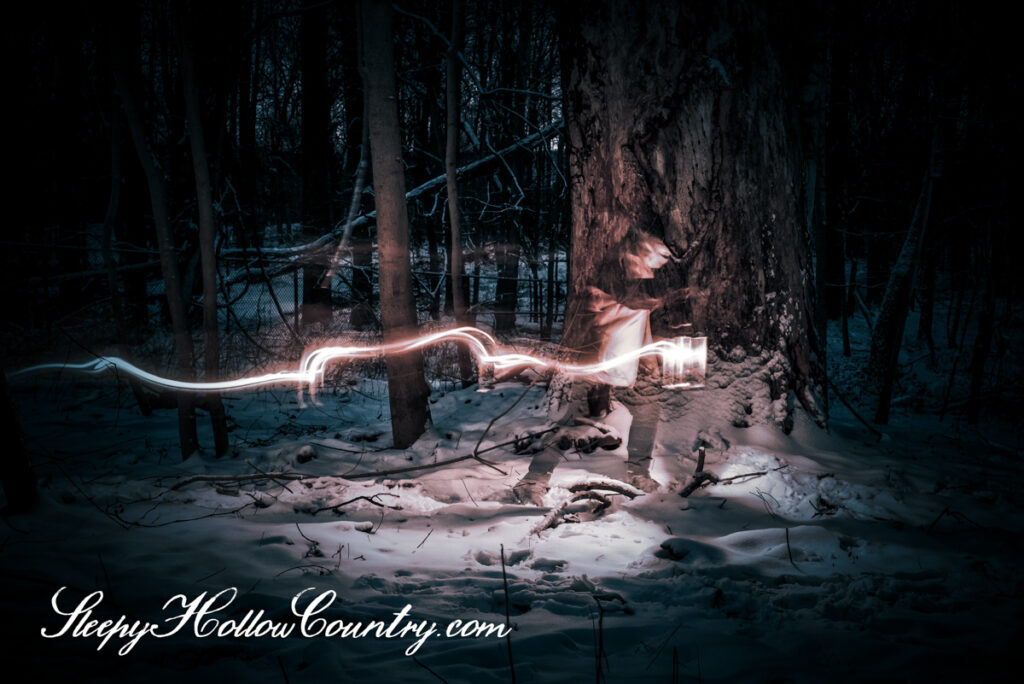
The man found his way home and to the smoldering and ashy scene of the fire and devastation of his family; sweeping scars of black ash and rippling coals against the white bright snow. Again, the details vary: some have the man immediately vanish from the region, and others have the locals discovering the negligence and tarring and feathering the man in retribution for the careless deaths of his children. Nevertheless, he is never seen or heard from again and as a result, the kind families of Boutonville bury the four children near the base of the mighty oak.
To this day, on particularly cold winter nights, a dark ghostly figure stalks the area around the Boutonville Oak, lantern in hand, and searching in earnest to be reunited with the lost children.
Know of a notable ghost whose narrative should be brought to light? Kindly send the details to us at ghost.editor@sleepyhollowcountry.com.


